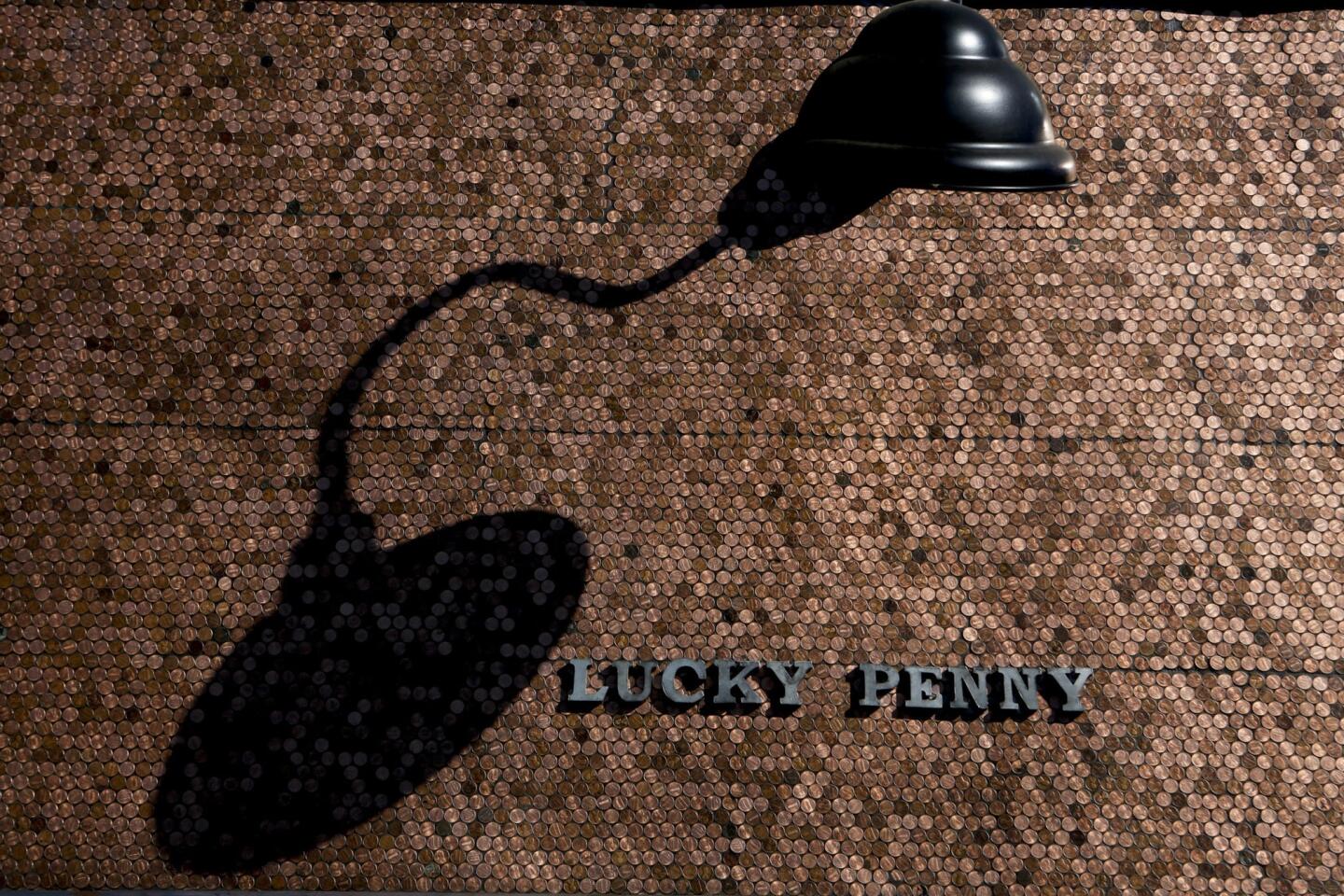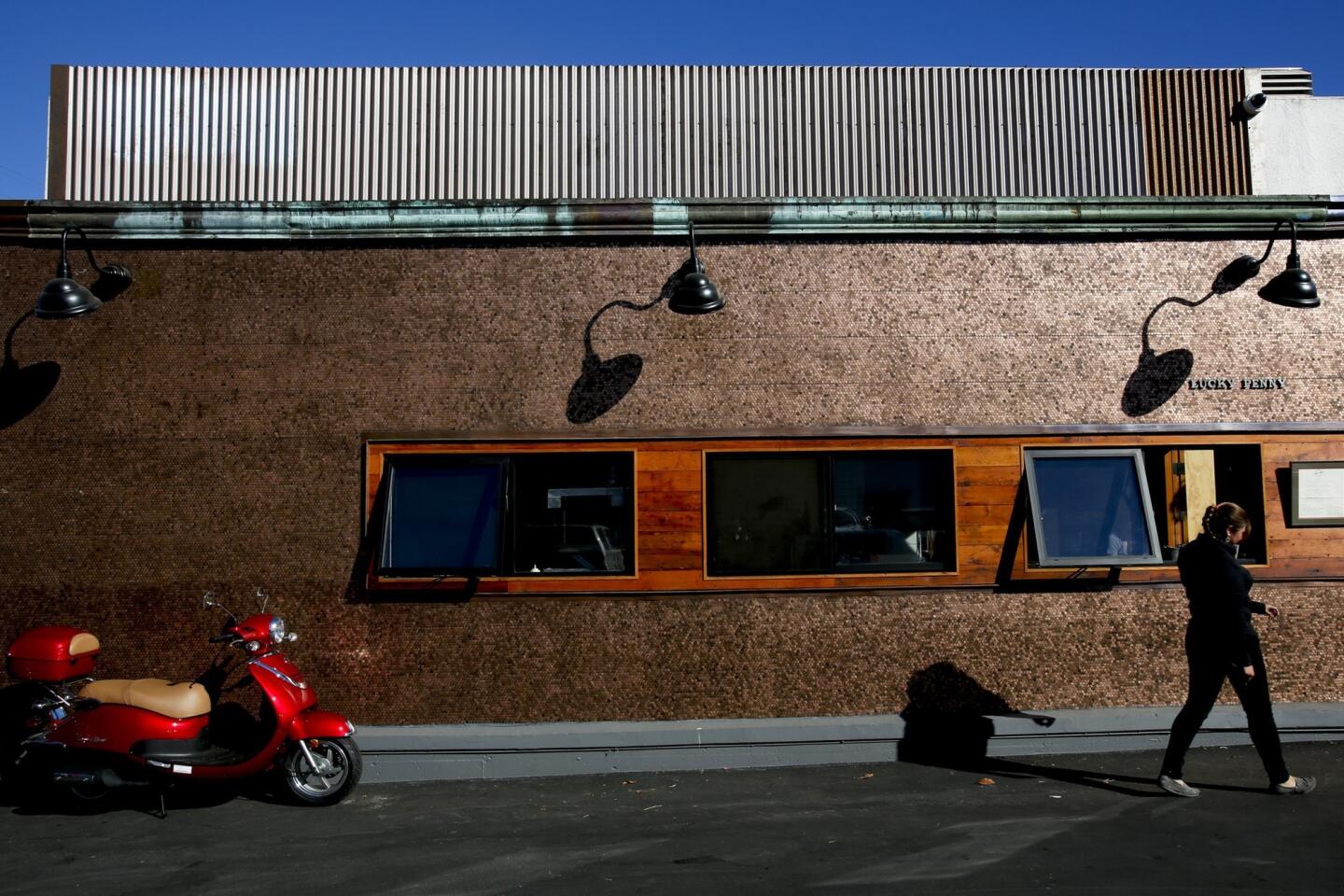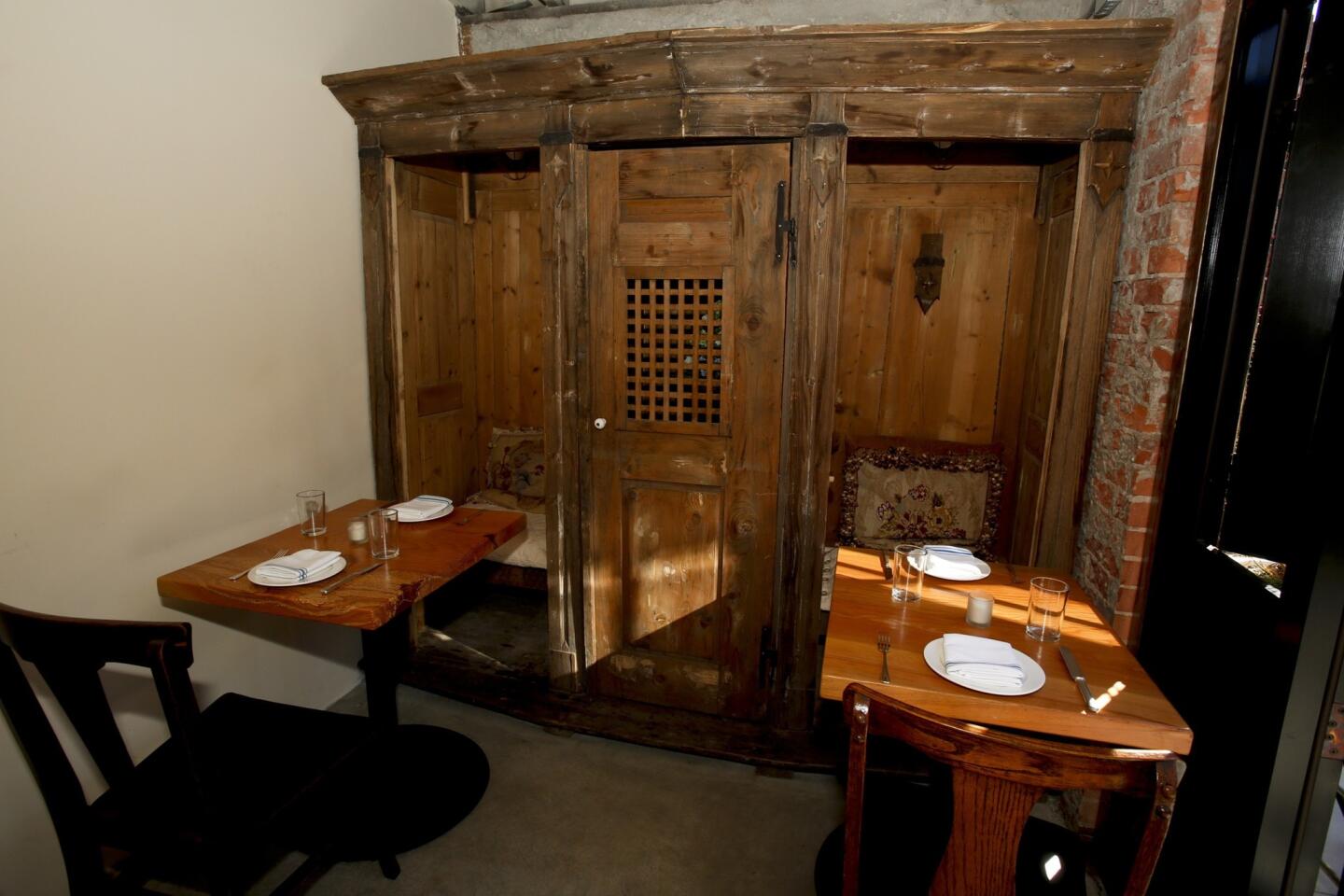Lucky Penny? How about a wall of them: Copper coins as tile
Customers of the new Santa Barbara restaurant Lucky Penny may pass by the wall tiled in real coins and be tempted to try the design stunt at home, given that it calls for a simple material that seems so cheap. But think twice, cautions its designer, Doug Washington: “It’s incredibly time-consuming, tedious and hard to install.”
The fabrication of the penny wall at Lucky Penny turned out not to be for the careless or the OCD-prone. Wall assembly was a six-month community effort involving local high school students who volunteered their labor in exchange for Lucky Penny contributions to nonprofit organizations.
To create the penny tiles, coins were glued by hand onto 12-inch-square plastic mesh sheets. Those sheets then were applied to the building with epoxy mastic and thin-set mortar, just like conventional ceramic tile, Lucky Penny managing partner Sherry Villanueva says.
Designers have used penny tile to make dramatic statements before, but usually as floor tile. Real coins proved to be more challenging when used on a vertical surface. Villanueva also said the restaurant’s location near the ocean was as a factor, requiring extra attention to the selection of grout and sealant.
With strong enough glue, the coins won’t fall off the mesh backing, Villaneuva said, but in order for the pennies to line up and look attractive, they had to be arranged with precision. When Washington was asked to give advice to readers interested in repeating the project, he said: “Rent an entire season of some show they’ve never seen.” This will take time.
The showstopper of an exterior is one of many crafty and chic design components in the complex where Lucky Penny opened Aug. 6. With the Lark restaurant and Les Marchands Wine Bar & Merchant, Lucky Penny occupies structures that had been part of the Santa Barbara Fish Market, near the Amtrak station. Clay Aurell of Santa Barbara-based AB Design Studio was the project’s architect of record.
Lucky Penny is primarily a takeout restaurant, with a pizza oven built by Sicilian pizzaiolo Giuseppe Crisa.
The Lark restaurant next door is loaded with reclaimed furnishings. Vintage radiators are the base of a communal table crafted from a 226-year-old Douglas fir tree; church pews provide seating, and even a century-old confessional from Provence has been transformed into an unusual booth. Old-fashioned exposed-filament light bulbs dangle from a vintage salon hair dryer turned into a lamp. (A workshop in Portland, Ore., fabricated the lighting fixtures based on Washington’s designs and salvaged finds.)
Salvaged steel window panels from a Bay Area military aircraft hangar lines the Lark’s patio. The combination of glass panes, empty frames and newly inserted succulent plantings provides a play of enclosure and openness.
Antique bathtubs have been deployed as planters, and Lucky Penny’s outdoor seating area has a rotating gallery of art created in partnership with local nonprofits.
The overall design embraces the surprising potential of simple materials, including the pennies. Although the surface has been clear-coated “because we didn’t want the whole wall to turn green,” Villanueva says, what you see now isn’t what you might see later.
The prospect of evolution is part of the fun, said Washington, who wouldn’t be disappointed by some change in patina. “Copper is alive,” he said. “Over time, that thing is going to change.”
And in case you were wondering: Yes, the restaurant is running a contest to guess exactly how many pennies are on the wall.
JOIN THE CONVERSATION:@latimeshome | pinterest.com/latimeshome | facebook.com/latimeshome | facebook.com/latimesgarden













